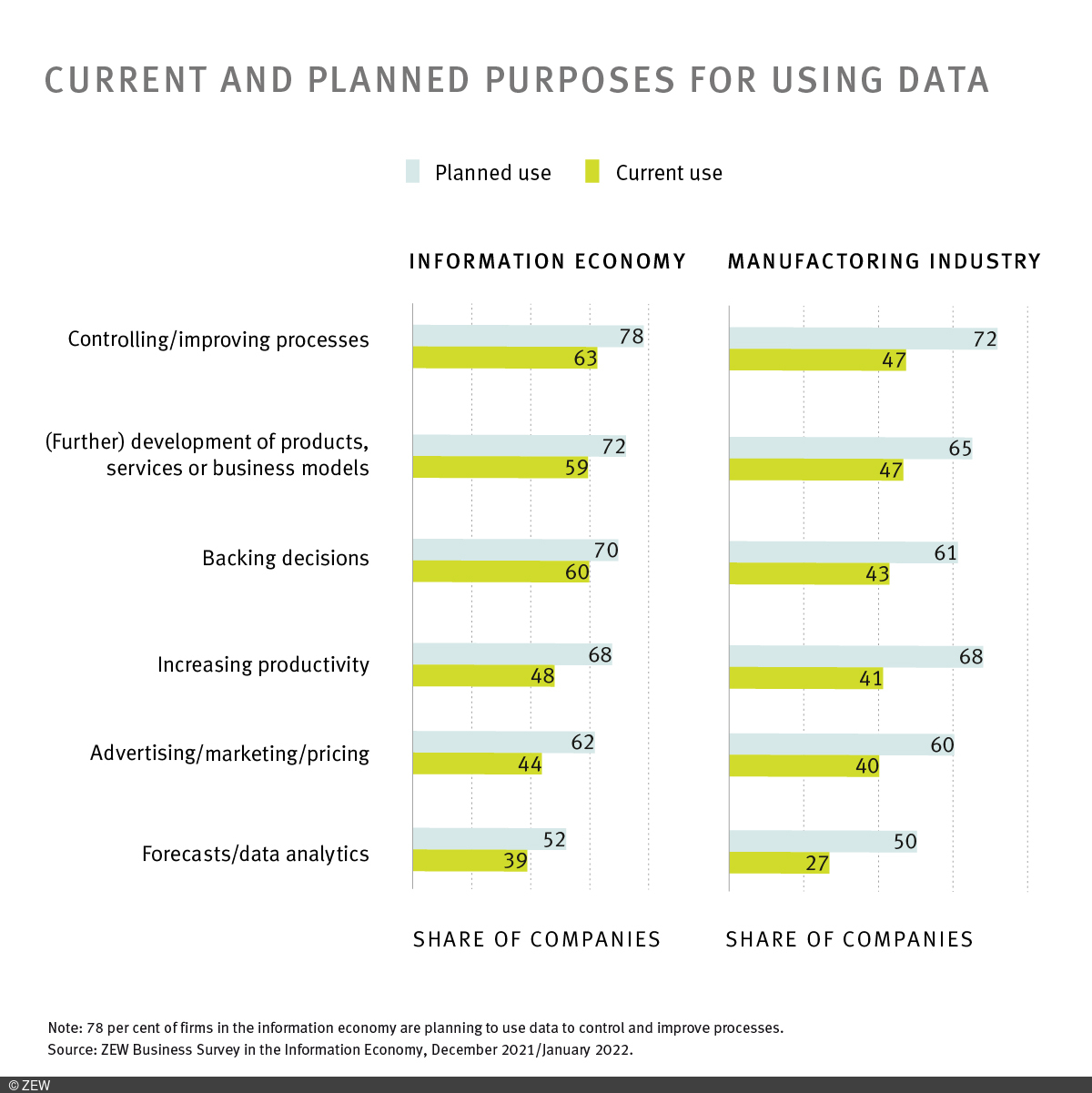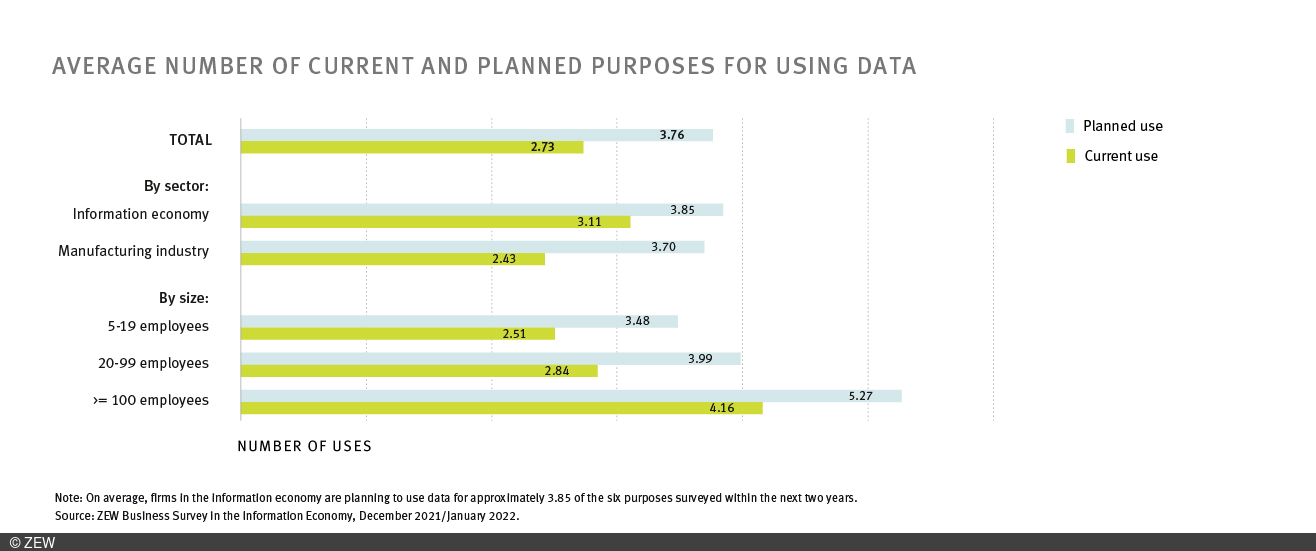Firms Plan to Widen Their Use of Data in the Future
ResearchAs the process of digitalisation advances, the amount of available data is growing at a fast pace. At the same time, the entrepreneurial potential to use data profitably for developing new products and services or improving existing ones, saving costs or creating new business models is also increasing. A recent ZEW study summarises the results of a representative business survey on the use of data by firms in Germany.
The study analyses which goals firms in the information economy and the manufacturing industry are currently pursuing through the use of data and which goals they will pursue over the next two years. “Among 63 per cent of firms in the information economy and 47 per cent in manufacturing, data is most commonly used to control and improve processes,” says Dr. Daniel Erdsiek, a researcher in ZEW’s “Digital Economy” Unit. Roughly 60 per cent of firms in the information economy, and a little less than 50 per cent in the manufacturing industry, are currently using data to back up decisions or to (further) develop their products, services or business models. Between 40 and 48 per cent of firms use data for advertising, marketing, pricing or to increase productivity. Of all the purposes included in the survey, using data for forecasting or data analysis was the least common. Still, more than one in four firms uses data for this purpose, 39 per cent in the information economy and 27 per cent in the manufacturing industry.
More than half of the firms plan to broaden their use of data
Firms were also asked whether they plan to use data for the six purposes surveyed within the next two years, in addition to their current use of data. For each purpose, the share of firms planning to use data in this way is substantially higher than the current share of firms already using data for that purpose. “In both sectors, the most frequently expressed plan was to use data to control and develop processes. Overall, 78 per cent of firms in the information economy and 72 per cent in the manufacturing industry plan to use data for this purpose within the next two years,” says ZEW researcher Vincent Rost, co-author of the study. The share of firms planning to use data for this purpose increases by 15 percentage points in the information economy and 25 percentage points in manufacturing, compared to the share of firms already doing so. “Firms expect that the use of data for the purpose of increasing productivity will experience the biggest surge. In the information economy, the corresponding share of firms rises by 20 percentage points and by 27 percentage points in the manufacturing industry,” says Daniel Erdsiek. Based on estimates made by the firms, the share of firms using data for any of the surveyed purposes will increase by 15 percentage points in the information economy and by 22 percentage points in the manufacturing industry. “In the medium term, companies are planning to use data for a wider variety of purposes than before,” says Erdsiek.
Number of purposes for using data increases with company size
At the time of the survey in December 2021 and January 2022, firms were using data for an average of 2.73 of the six purposes surveyed. The average was slightly higher in the information economy with 3.11 purposes than in the manufacturing sector with 2.43 of the surveyed purposes. In line with the available research results, companies expect the average number of purposes for using data to rise considerably. For example, firms in the information economy assume that data will on average be used for 3.85 purposes within the next two years. In the manufacturing industry, 3.70 of the purposes surveyed will be pursued on average. In addition to the sector in which a company operates, its size is a relevant factor in determining the average number of purposes for which data is used. The larger the company, the higher the number of current and planned uses of data for various purposes. On average, all firms plan to use data for one additional purpose within the next two years. This is true for both sectors and for all company sizes included in the survey.



